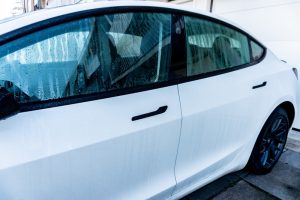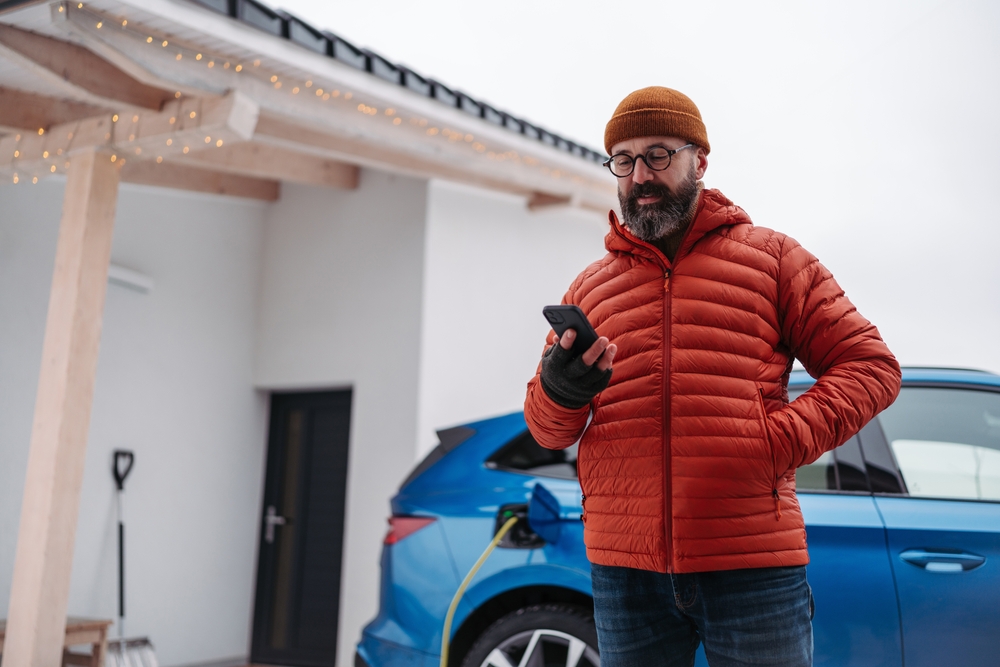Winter EV guide: Maximise range, charge smarter, drive safer

The number of electric vehicles (EVs) on the road is growing faster every year and so many drivers are heading into their very first winter behind the wheel of an EV. While EVs are mostly really similar to petrol and diesel cars, they also come with a few unique things to consider, especially when the temperatures drop.
If you’re about to face your first winter in an electric car, or just need a quick refresher, here are some practical tips to maximise EV range, charge efficiently, drive safely, and get the most out of your EV in the winter.
How cold weather affects EV range
One of the biggest differences you’ll notice in winter is the effect of cold weather on your EV’s battery. Low temperatures can reduce range from around 10% to up to 30%, depending on conditions and how you drive.
Planning ahead means this isn’t an issue. If you’re setting off on a longer journey, make sure you have a full charge and know where the charge points are along your route.
Pro tip: The experts recommend that you don’t leave your car overnight with less than 10% battery – it might drop to zero charge if the weather gets really cold!
Pre-conditioning your EV
One of the real perks of driving an EV is pre-conditioning. Using your car’s app, you can heat the cabin and defrost the windows before you even step outside of your door. That means no more shivering in an icy car first thing in the morning.
It also brings the battery up to temperature slowly and safely, protecting your battery’s health.
Many EVs also allow you to customise heating zones, so you can warm the driver’s seat without wasting energy heating the back seats. This little trick helps maximise the range available to you, while keeping you comfortable.
Regenerative braking in snow and ice
Regenerative braking is brilliant for adding a few extra miles of range, but in winter conditions it needs careful handling. On icy or snowy roads, strong regeneration can cause your car to slow more abruptly than you’d like, which may affect your grip on slippery roads.
Some EVs let you adjust regenerative braking settings or even create a winter driving mode which allows you to accelerate and brake more gently. And as with any car, smooth, steady acceleration, braking, and steering are your best friends in icy conditions.
Clearing snow and ice from your EV
 Modern EVs are loaded with tech, from sensors and reversing cameras to advanced headlights. But they’re no use if they’re covered in snow and ice.
Modern EVs are loaded with tech, from sensors and reversing cameras to advanced headlights. But they’re no use if they’re covered in snow and ice.
Before you set off, take a moment to clear ice and snow from:
- Headlights and rear lights
- Cameras and sensors (especially if you rely on parking assists)
- Windows and mirrors
This small step goes a long way toward safer winter driving –some of which can be covered off by pre-conditioning!
 Extra winter EV tips
Extra winter EV tips
Beyond the basics, here are a few more things to keep in mind:
- Charging in the cold: Batteries charge more slowly in freezing temperatures. If possible, plug in overnight so the car is ready (and warm) in the morning.
- Use heating wisely: Heated seats and steering wheels use less energy than blasting the cabin heater.
- Emergency prep: Just like in any car, carry winter essentials – blanket, gloves, torch, and phone charger – in case you get stranded. You can also get an EV booster, to top your battery up in an emergency.
Frequently Asked Questions
Do EVs lose range in winter?
Yes. Expect anywhere from 10–30% less range, depending on the temperature and your driving habits and the type of battery in your EV.
Can I charge my EV in freezing temperatures?
You can, but charging may take longer. Pre-conditioning the battery before charging can help.
Is regenerative braking safe on ice?
Yes, but use it with caution. Strong regen can cause sudden deceleration, so dial it back in slippery conditions if your car allows.
Final Thoughts
Your first winter in an EV doesn’t need to be daunting. With a little planning, you’ll be prepared to get the most out of your EV safely whatever the weather.
Do you have any concerns about driving an EV through floods?

 Extra winter EV tips
Extra winter EV tips